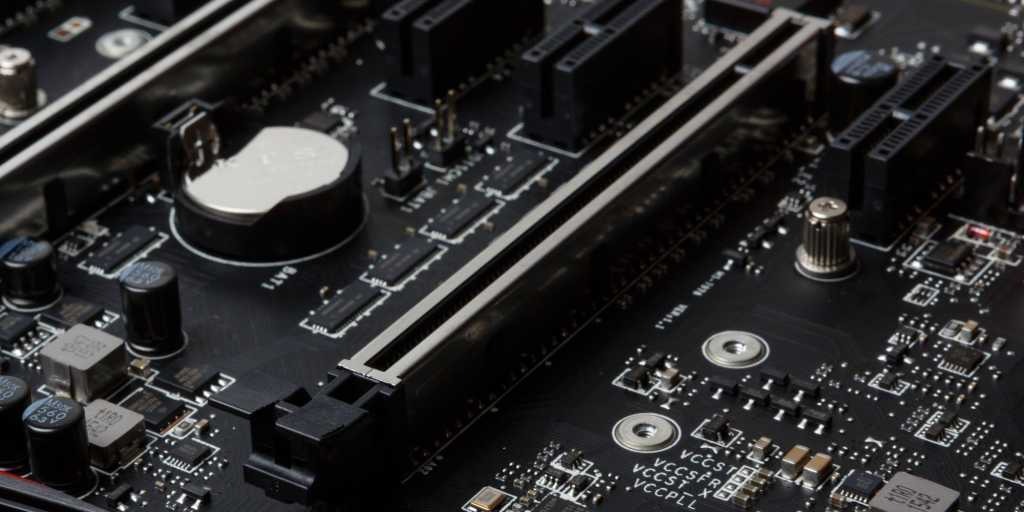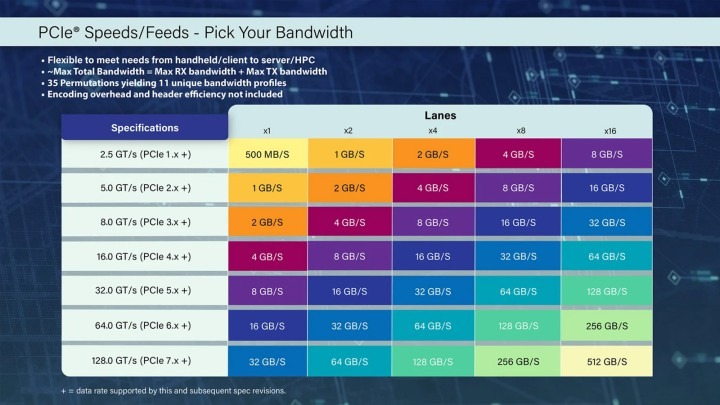Lightning fast lanes will have many advantages.
PCIExpress has been with us for a long time. Since its debut in 2003, it has made its way everywhere, quickly ousting AGP, which is responsible for connecting video cards. This is not accidental, because it is a truly versatile connector. In addition to VGAs, we can also connect SSDs, sound cards, Wi-Fi or even Ethernet adapters to the motherboard thanks to standard frames.
By 2023, the 4.0 version has already spread to more and more places, and the 5.0 variant can also be found on some motherboards. Version 3.0 is probably the most prevalent right now, thanks to the many machines in use, but as with memories, you also have to prepare for major era changes every 4-5 years. The engineers, programmers, and developers behind the standard don’t think differently, either. You might think they are currently working on version 6.0, but we couldn’t be more wrong. A few days ago, new information about PCI Express 7.0 was shared, and we can also see why it is useful for users and gamers.
What is PCIe 7?
PCI Express 7 is the next generation of the PCI Express standard, and the generation change takes place in several clear leaps. As mentioned above, we can talk about a truly versatile connector, with the help of which we can expand the capabilities of our motherboard and machine with all the good things on earth. The latest publicly available generation is the fifth, but we don’t have to wait long for the 6.0 version, the seventh version will arrive after that. Modern video cards are already configured to support 5.0, but in practice they do not even push the boundaries of 4.0.
How fast will it be?
The full-size PCIe slot, into which we put, for example, a video card, has 16 lanes. PCIe version 7 guarantees data speeds of up to 32 GB/s per lane. Just to have something to compare it to, we can move as much data on 4 PCIe 7 lanes just as much as we can on 16 lanes of Version 5. So we can expect amazing jumps, as the data speed per band is always doubled during generational hops.
Why would this be useful to us?
PCI SIG, responsible for the standard, listed several reasons for the continued development. PCIe 7 will be able to provide sufficient data transfer speed for cards arriving in the second half of 2020. Beside that It could also be useful for ultra-fast Ethernet connections, but the technology will also be used for AI computations. If you look at it from the perspective of ordinary users, there are still advantages. Thanks to the tremendous data speed per lane, much smaller connectors can be packed onto motherboards. Two of the 7 tracks can replace 16 of the currently unused Track 4 tracks. In addition, engineers who work according to the standard promise better latency and more advanced efficiency.
When can you arrive?
PCIe 6 was announced in 2022, and the first products and devices that support it may arrive at the end of 2023. PCIe 7 is currently scheduled to debut in 2025, so we may not see the first products that support PCIe 7 until 2026. So you don’t have to wait on the edge of your seat, but it’s always nice to know what changes we can expect in the coming years.
source: bebum
Even 30 year old Windows runs ChatGPT – you can download that too













































